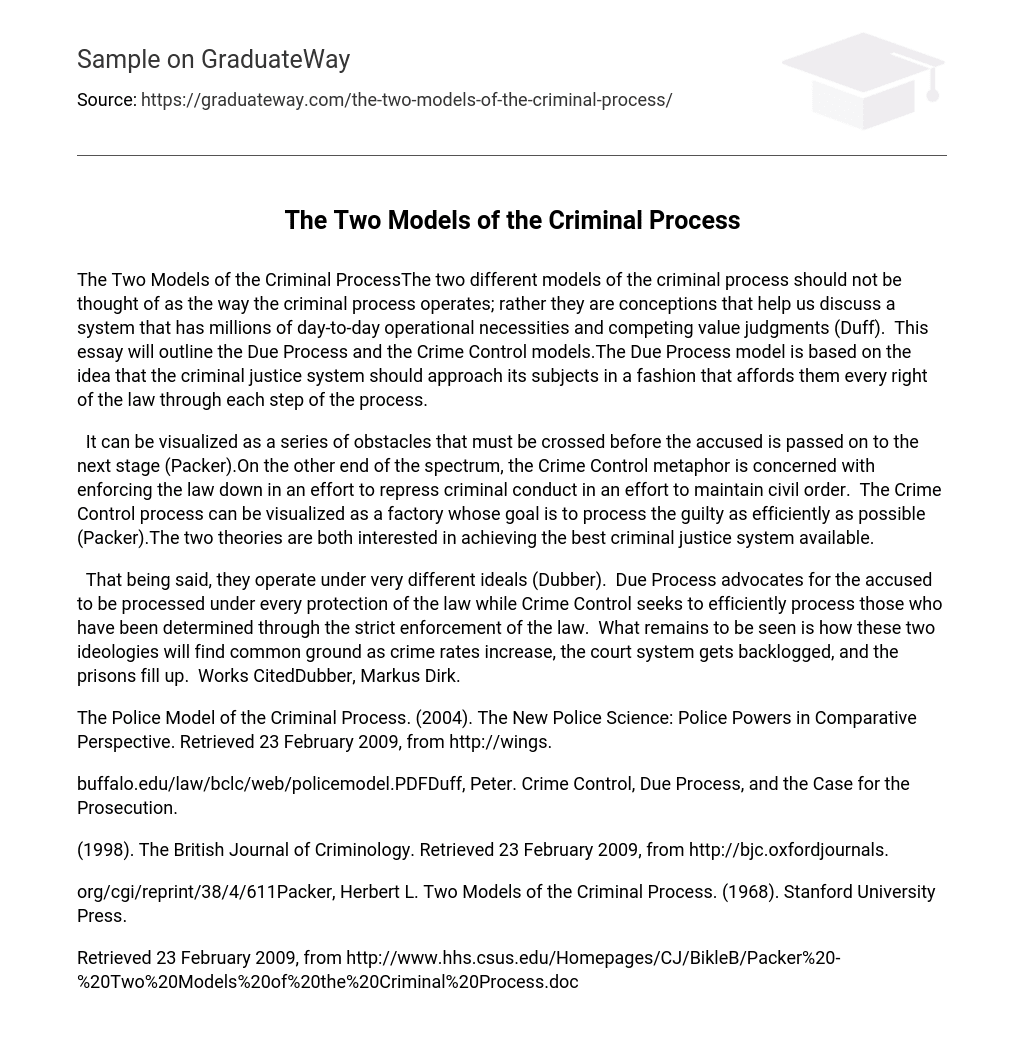The two different models of the criminal process should not be thought of as the way the criminal process operates; rather they are conceptions that help us discuss a system that has millions of day-to-day operational necessities and competing value judgments (Duff). This essay will outline the Due Process and the Crime Control models.
The Due Process model is based on the idea that the criminal justice system should approach its subjects in a fashion that affords them every right of the law through each step of the process. It can be visualized as a series of obstacles that must be crossed before the accused is passed on to the next stage (Packer).On the other end of the spectrum, the Crime Control metaphor is concerned with enforcing the law down in an effort to repress criminal conduct in an effort to maintain civil order. The Crime Control process can be visualized as a factory whose goal is to process the guilty as efficiently as possible (Packer).
The two theories are both interested in achieving the best criminal justice system available. That being said, they operate under very different ideals (Dubber). Due Process advocates for the accused to be processed under every protection of the law while Crime Control seeks to efficiently process those who have been determined through the strict enforcement of the law. What remains to be seen is how these two ideologies will find common ground as crime rates increase, the court system gets backlogged, and the prisons fill up.
Works Cited
- Dubber, Markus Dirk. The Police Model of the Criminal Process. (2004). The New Police Science: Police Powers in Comparative Perspective. Retrieved 23 February 2009, from http://wings.
- Duff, Peter. Crime Control, Due Process, and the Case for the Prosecution. (1998). The British Journal of Criminology. Retrieved 23 February 2009, from http://bjc.oxfordjournals.
- Herbert L. Two Models of the Criminal Process. (1968). Stanford University Press. Retrieved 23 February 2009, from http://www.hhs.csus.edu/Homepages/CJ/BikleB/Packer%20-%20Two%20Models%20of%20the%20Criminal%20Process.doc





